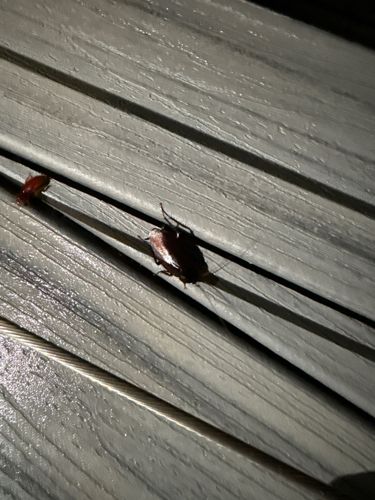American Cockroach (and possibly German Cockroach for the smaller one)
Scientific Name: Periplaneta americana (for the larger one), and possibly Blattella germanica (for the smaller, lighter one)
Order & Family: Order: Blattodea, Family: Blattidae (for American Cockroach) and Family: Ectobiidae (for German Cockroach)
Size: American Cockroach: 35-50 mm (1.4-2 inches); German Cockroach: 11-16 mm (0.43-0.63 inches)

Natural Habitat
They are often found in dark, undisturbed areas, especially in warm, humid places like basements, sewers, drains, kitchens, and bathrooms. Outdoors, they can be found in leaf litter, under mulch, in woodpiles, and in sewers.
Diet & Feeding
Omnivorous scavengers, eating almost anything organic, including food scraps, decaying matter, starches, sweets, grease, hair, dead insects, paper, and even soap.
Behavior Patterns
Cockroaches are primarily nocturnal and active at night, foraging for food and water. They are known for their rapid reproduction rate. They prefer warm, moist environments and can squeeze into incredibly small spaces due to their flattened bodies. They are known to scatter quickly when disturbed.
Risks & Benefits
Risks: Cockroaches are considered pests. They can spread bacteria and pathogens, contaminate food, and potentially aggravate allergies and asthma in sensitive individuals through their droppings and shed skins. Benefits: In nature, they play a role as decomposers, breaking down organic matter.
Identified on: 8/17/2025